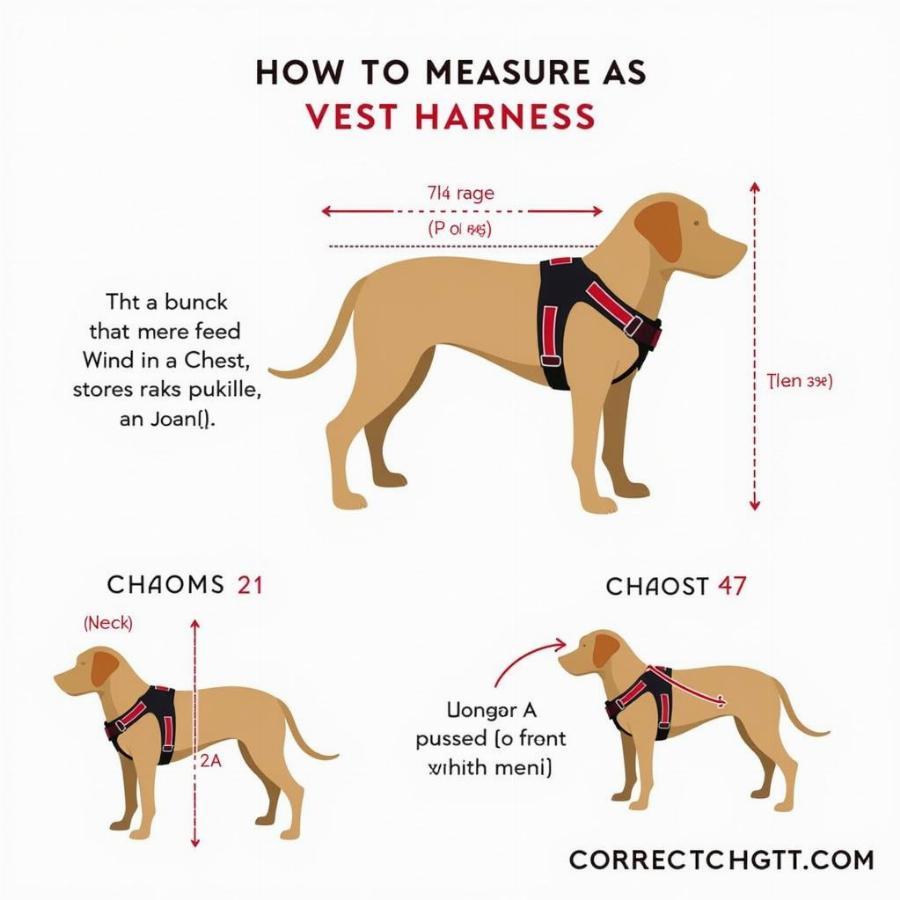Dog vest harnesses have become increasingly popular in recent years, and for good reason. Offering a comfortable and secure alternative to traditional collars, they provide a range of benefits for both dogs and their owners. Whether you’re welcoming a new puppy into your home, have a strong puller, or simply want the best for your canine companion, understanding the ins and outs of dog vest harnesses can help you make an informed decision for your furry friend.
Why Choose a Dog Vest Harness?
Unlike collars that put pressure on a dog’s delicate neck area, a vest harness distributes pressure more evenly across the chest and back. This is especially beneficial for dogs prone to tracheal collapse, neck injuries, or those who simply pull on the leash.
Here are some key advantages of using a dog vest harness:
- Reduced Strain on the Neck: By redirecting pressure away from the trachea, vest harnesses minimize the risk of choking, gagging, and potential neck injuries.
- Better Control: The design of a vest harness gives you more control over your dog, particularly if they tend to pull on walks.
- Increased Comfort: Many dogs find vest harnesses more comfortable than collars, leading to a more enjoyable walking experience for both of you.
- Escape Prevention: For dogs who are escape artists, a well-fitted vest harness can make it more difficult for them to slip out.
Types of Dog Vest Harnesses
Navigating the world of dog vest harnesses can feel overwhelming with the variety of options available. Let’s break down the most common types:
1. Back-Clip Harnesses
Back-clip harnesses feature a leash attachment point on the dog’s back, between the shoulder blades. They’re a great choice for dogs who have mastered loose-leash walking or are still in training.
Pros: Easy to put on and take off, comfortable for most dogs, discourage pulling.
Cons: May not be suitable for strong pullers or dogs prone to backing out of harnesses.
2. Front-Clip Harnesses
Front-clip harnesses have the leash attachment point on the dog’s chest. This design is particularly helpful for dogs who tend to pull on the leash.
Pros: Effective at reducing pulling, provide more control.
Cons: May take some getting used to for dogs, can tangle legs if not fitted correctly.
3. Dual-Clip Harnesses
As the name suggests, dual-clip harnesses offer both a front and back leash attachment point, providing versatility for different walking situations.
Pros: Adaptable for various training needs, offer the benefits of both front and back clips.
Cons: Can be more expensive than other types.
Finding the Perfect Fit: Measuring Your Dog
A well-fitted dog vest harness is crucial for your dog’s comfort and safety. To ensure the perfect fit, follow these measuring tips:
- Chest Circumference: Measure the widest part of your dog’s chest, usually just behind the front legs.
- Neck Circumference: Measure around the base of your dog’s neck where the collar would naturally sit.
- Length: Measure from the base of the neck to the base of the tail.
Always refer to the manufacturer’s sizing chart, as sizing can vary significantly between brands.
Choosing the Right Material and Features
Dog vest harnesses come in a range of materials, each with its pros and cons:
- Nylon: Durable, lightweight, and often water-resistant, making them a popular choice.
- Leather: Strong and stylish, but may require more maintenance.
- Mesh: Breathable and lightweight, ideal for hot weather.
Consider additional features like padding for added comfort, reflective strips for visibility at night, and adjustable straps for a customizable fit.
 How to Measure Your Dog for a Harness
How to Measure Your Dog for a Harness
Tips for Introducing a Harness to Your Dog
Introducing a harness should be a positive experience. Here’s how:
- Let Your Dog Investigate: Allow your dog to sniff and explore the harness before attempting to put it on.
- Use Positive Reinforcement: Pair the harness with treats, praise, and a happy voice to create positive associations.
- Start Slowly: Begin by putting the harness on for short periods inside the house, gradually increasing the duration.
Dog Vest Harnesses: A Smart Choice for Canine Comfort and Control
Investing in a well-fitted and comfortable dog vest harness can significantly enhance your dog walking experience. Remember to prioritize your dog’s safety and well-being by choosing a harness that fits correctly, provides adequate control, and suits their individual needs.
Frequently Asked Questions about Dog Vest Harnesses
Q: Can puppies wear vest harnesses?
A: Yes, vest harnesses are a great option for puppies as their necks are still developing. Look for harnesses specifically designed for growing pups.
Q: My dog pulls even with a front-clip harness. What should I do?
A: Consistent training is key. Consult with a certified dog trainer for guidance on loose-leash walking techniques.
Q: How do I clean a dog vest harness?
A: Most harnesses can be hand-washed or machine-washed on a gentle cycle. Always check the manufacturer’s instructions for specific cleaning recommendations.
Looking for more advice on dog gear and care? Visit our blog for a wealth of information on all things dog-related.
Need personalized assistance in finding the perfect dog vest harness? Contact Beaut Dogs today! Email us at [email protected] for expert advice and tailored recommendations. At Beaut Dogs, we’re passionate about providing dog owners with reliable information and resources to ensure their furry companions live their happiest and healthiest lives.